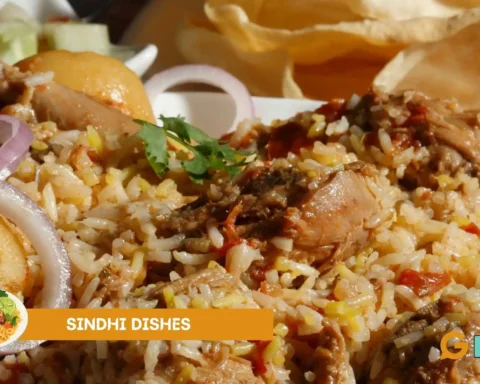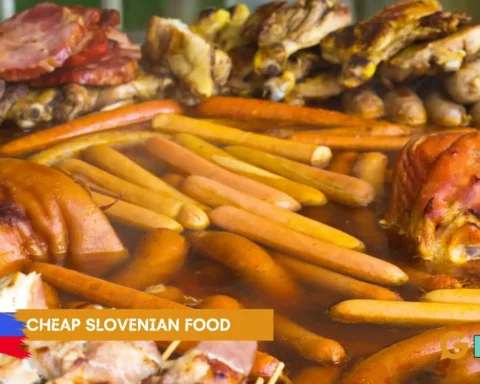Meet the versatile and leafy superstar of the veggie world: cabbage! Bursting with vibrant colour and crunch, cabbage is the ultimate canvas for culinary creativity. This veggie has everything from zesty coleslaws that do the tango with your taste buds to comforting bowls of hearty cabbage soup that embrace you like a cosy blanket. Don't forget about sauerkraut, the tangy, probiotic-rich wonder that turns ordinary cabbage into a gut-pleasing delight. Whether crispy, pickled, or simmered to perfection, cabbage curry and its dishes are like a lively dance party for your palate!
Table of Contents
Coconut Milk-Infused Ugandan Cabbage Curry
The inclusion of a head of cabbage or head cabbage and creamy coconut milk elevates this dish, creating a harmonious balance of textures and flavours that encapsulate the essence of Ugandan cuisine. Enjoy the delightful blend of ingredients in every spoonful.
Ingredients:
- 1 head of white cabbage or cabbage leaves, thinly sliced
- 2 carrots, julienned
- 1 yellow onion, thinly sliced
- 2 tomatoes, chopped
- 2-3 garlic cloves, minced
- 1 tsp grated fresh ginger
- 1 tsp curry powder
- 1/2 tbsp turmeric powder
- 1/2 tbsp cumin seeds or cumin powder
- 1 tsp red chilli flakes (adjust to taste)
- Pinch of Salt and pepper to taste
- 2 tbsp cooking oil
- 1/2 cup grated coconut (fresh or desiccated)
- 1/2 cup coconut milk
- Fresh coriander leaves for garnishing
Instructions:
Thinly slice the cabbage, julienne the carrots, and chop the tomatoes. Mince the garlic and grate the ginger. If using fresh coconut, grate it or chop it finely. Heat oil in a large pan over medium heat. Add cumin seeds and let them sizzle for a few seconds. Add minced garlic and grated ginger.
Sauté for a minute until fragrant. Stir in the sliced onions and cook until they become translucent. Add the julienned carrots to the pan and sauté for a few minutes until they soften. Add curry powder, turmeric powder, red chilli flakes, salt, and pepper. Mix well. Add grated coconut to the pan and combine it with the vegetables and spices.
Toss in the thinly sliced cabbage and chopped tomatoes. Cook for about 5-7 minutes until the cabbage is tender yet still has a slight crunch. Pour in the coconut milk and let the flavours meld together for another 2-3 minutes.
Taste and adjust the seasoning if needed. Remove from heat and garnish with fresh cilantro leaves. Serve the Coconut Milk-Infused Ugandan Cabbage Curry as a delightful side dish or main course, complemented by steamed rice, chapati, or any Ugandan staple you prefer.
Indian Style Cabbage Curry
Indian Cabbage Curry is a mouthwatering vegetarian flavorful dish that showcases the rich flavours of Indian cuisine. This aromatic and wholesome curry recipe features finely chopped cabbage cooked with a medley of spices, including turmeric, chilli, and garam masala. Served alongside rice or bread, it's a delightful combination of tender cabbage and a symphony of Indian spices that will tantalize your taste buds.
Ingredients:
- 1 small green cabbage, white cabbage, or purple cabbage finely chopped
- 1 large green onion, finely chopped
- 2 tomatoes, chopped
- 2-3 green chillies, slit
- 1 tsp ginger-garlic paste
- 1 tsp cumin powder or cumin seeds
- 1 tsp black mustard seeds
- 1/2 tsp turmeric powder
- 1 tsp chilli powder (adjust to taste)
- 1 tsp coriander powder
- 1/2 tsp garam masala or spice powder
- Salt to taste
- Few curry leaves
- 2 tbsp oil (vegetable or mustard oil or Avocado oil)
- 1 tsp lemon juice
- Fresh cilantro leaves for garnishing
Instructions:
To cut down the prep time, you can also use pre-cut coleslaw. Finely chop the cabbage leaves using a knife or food processor, discarding the tough core. Chop the onion, tomatoes, and slit the green chillies. Prepare ginger-garlic paste if not already available. Heat oil in a pan or pot over medium-high heat. Add a teaspoon of cumin seeds, black mustard seeds, and curry leaves. Allow them to splutter. Add the finely chopped onions and sauté until they turn golden brown.
Stir in the ginger-garlic paste and sauté for a minute until the raw smell disappears. Add the chopped tomatoes and cook until they become soft and the oil separates. Add red chili powder and then turmeric powder. Then add ground coriander and salt. Mix well. Sauté the spices for a few minutes to let them bloom and release their flavours.
Mix the chopped green or white cabbage well with the spice base. Cook on medium-low heat. Cover the pan and let it cook for 10-15 minutes, stirring occasionally. The cabbage will release moisture and cook down. Once the cabbage is tender, sprinkle garam masala or ground spices and mix well. Add some salt and let the curry simmer for 2-3 minutes, allowing all the flavours to meld together.
Add lemon juice and garnish with fresh cilantro leaves. Serve the delicious Indian-style cabbage curry hot with steamed rice, roti, or any bread you choose. This Indian dish- cabbage curry, is a simple recipe with a delightful mix of flavours and textures, perfect for a comforting and nutritious meal. Enjoy the blend of spices and the goodness of cabbage in every bite!
Variations in Ugandan Cabbage Recipes
In Uganda, cabbage is used in various ways to create diverse and flavorful dishes. Some popular variations include:
- Kaleeba or Posho and Cabbage: A common combination where cabbage is sautéed with onions, tomatoes, and sometimes carrots, served alongside posho (maize porridge) for a balanced meal.
- Cabbage Stew: Cabbage is added to stews with other vegetables and protein sources like beans or groundnuts, creating a hearty and nutritious dish.
- Cabbage Rolls: Cabbage leaves are stuffed with a mixture of minced meat, rice, and spices, then simmered in a tomato-based sauce.
- Cabbage Stir-Fry: Cabbage is often stir-fried with other vegetables, spices, and sometimes protein sources like eggs or ground meat for added flavour and protein.
- Cabbage Coleslaw: A refreshing side dish made from shredded cabbage mixed with carrots, onions, and a tangy dressing, contrasting textures and flavours.
- Cabbage and Peanut Sauce: Cabbage is cooked with groundnut sauce (peanut sauce) and spices, creating a satisfying, creamy dish.
- Cabbage and Simsim (Sesame) Salad: Cabbage is combined with toasted sesame seeds, onions, and a light dressing for a nutty and crunchy salad.
- Cabbage and Groundnut Stew: Cabbage is cooked with groundnut paste and other vegetables, resulting in a creamy and flavorful stew.
- Cabbage Bhajia: Cabbage slices are coated in a spiced chickpea flour batter and deep-fried to create a crispy snack or appetizer.
These variations showcase the adaptability of cabbage in Ugandan cuisine, highlighting its role as a versatile ingredient that can be transformed into a range of dishes catering to different tastes and preferences.
Variations in Indian Cabbage Recipes
Indian cuisine offers a variety of cabbage recipes that cater to different tastes and preferences. Here are some popular Indian cabbage recipes:
- Cabbage Sabzi or Cabbage Stir Fry: A simple and flavorful dish where shredded cabbage is stir-fried with spices like cumin, mustard seeds, and turmeric. It's often garnished with fresh coriander leaves.
- Cabbage Kofta: Cabbage is mixed with besan (gram flour) and spices to form deep-fried kofta balls and then simmered in a rich tomato-based gravy.
- Cabbage Paratha: Cabbage is finely chopped and mixed with spices before being stuffed into whole wheat dough to make delicious, hearty stuffed flatbreads.
- Cabbage Pakora: Cabbage slices are coated in a spiced chickpea flour batter and deep-fried until crispy. They make for an excellent snack or appetizer.
- Cabbage Thoran: A South Indian dish where cabbage is finely chopped and cooked with grated coconut, green chillies, and curry leaves, creating a delicious and aromatic stir-fry.
- Cabbage Pulao: Cabbage is combined with fragrant basmati rice and spices to create a one-pot, comforting and nutritious dish.
- Cabbage Kootu: Cabbage is added to lentil-based soups or dals, enhancing the dish's flavour and nutrition.
- Cabbage and Coconut Curry: Cabbage is cooked in a coconut milk-based curry and other vegetables, creating a creamy and flavorful dish often served with rice or roti.
- Cabbage Rolls: Cabbage leaves are blanched and then stuffed with a spiced mixture of vegetables and rice. They are usually simmered in a tomato sauce.
- Cabbage and Carrot Sambhar: A South Indian lentil-based stew incorporating cabbage and carrots seasoned with traditional sambhar spices.
These are just a few examples of the diverse cabbage dishes in Indian cuisine. Each recipe brings its unique blend of spices and techniques to create delicious and satisfying meals.
Nutritional Benefits of Cabbage Curry
Cabbage curry presents a bounty of nutritional benefits in every savoury bite. Rich in dietary fibre, it aids digestion and supports gut health, while its low-calorie content makes it an ideal addition to weight management plans. Packed with vitamins K, C, and B6 and minerals like potassium and manganese, cabbage curry contributes to bone health, immune support, and overall vitality.
Conclusion
In conclusion, cabbage curry is a versatile gem in culinary creativity, be it in Indian, Ugandan, or global kitchens. With its ability to seamlessly absorb flavours, the humble cabbage transforms into a canvas for a myriad of spices and ingredients, offering a harmonious blend of taste and nutrition. Whether it's the comforting warmth of Indian spices or the enriching touch of coconut, cabbage curry exemplifies the art of turning simplicity into a culinary masterpiece.
FAQs
Do cabbage leaves freeze well?
Yes, cabbage leaves can be successfully frozen. When frozen, blanched cabbage leaves retain their texture and quality, making them suitable for use in dishes like stuffed cabbage rolls or other recipes that require cooked cabbage leaves.
What is the most nutritious way to eat cabbage?
The most nutritious way to eat cabbage is to enjoy it raw or lightly cooked to preserve its vitamins and minerals. Incorporating raw cabbage in salads or slaws or lightly steaming or stir-frying, it maintains its nutrient content and provides a healthy dose of fibre, vitamins, and antioxidants.
Is Cabbage hard to digest?
Cabbage can be relatively harder to digest for some individuals due to its high fibre content and complex carbohydrates. Cooking or fermenting cabbage can help break down some of the fibres and make it easier on the digestive system.
Is Cabbage Curry a staple in Ugandan cuisine?
Cabbage curry is not a traditional staple in Ugandan cuisine, but cabbage is commonly used in various dishes in Uganda, including stir-fries, stews, and side dishes. Ugandans often incorporate cabbage into their meals for its availability, affordability, and nutritional value.










